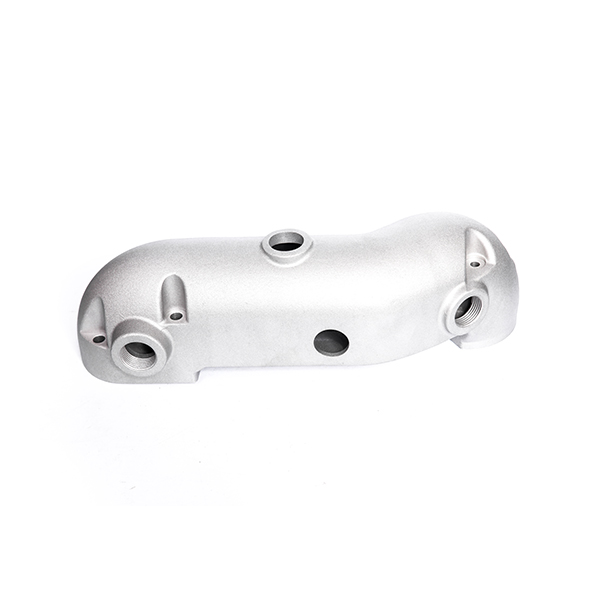Mobile:+86-311-808-126-83
Email:info@ydcastings.com
aluminum sand casting manufacturer
Aluminum Sand Casting An Overview of the Process and Benefits in Manufacturing
Aluminum sand casting is a widely used manufacturing process that involves pouring molten aluminum into a sand mold to create various components and parts. This method has gained popularity in various industries due to its versatility, cost-effectiveness, and ability to produce complex shapes. As a leading aluminum sand casting manufacturer, understanding the intricacies of this process is essential for delivering high-quality products to clients.
The sand casting process begins with the creation of a mold. Molds can be made from a variety of materials, but sand is favored for its good thermal properties and cost-effectiveness. The primary component of the mold is silica sand, often mixed with a bonding agent like clay and water to hold the sand grains together. The mixture is shaped into two halves the cope (top half) and the drag (bottom half). The halves are carefully aligned to form a cavity in which molten aluminum will be poured.
One of the significant advantages of aluminum sand casting is its ability to produce intricate designs and details. Molds can be customized to suit specific requirements, allowing manufacturers to create components with varying sizes, shapes, and complexities. This flexibility makes aluminum sand casting suitable for a vast array of applications, from automotive parts to aerospace components and industrial machinery.
Once the molds are prepared, the aluminum alloy is melted in a furnace. The molten aluminum is then carefully poured into the sand mold through a gating system, which directs the flow of metal. The sand mold retains the heat, allowing the aluminum to cool and solidify in the desired shape. After the aluminum has cooled sufficiently, the sand mold is broken away, revealing the cast part.
The cooling process plays a crucial role in determining the mechanical properties of the aluminum casting. The cooling rate can influence grain structure and strength characteristics, making it imperative for manufacturers to monitor this phase closely. Once the casting is removed from the mold, it undergoes several post-processing steps, including trimming, machining, and surface finishing, to meet specific requirements and tolerances.
aluminum sand casting manufacturer

One of the primary reasons aluminum sand casting is favored in manufacturing is its cost-effectiveness. Creating molds from sand is relatively inexpensive compared to other materials, such as metal or ceramic. Additionally, sand molds can be used multiple times, although they may require reconditioning after several uses. This reusability not only reduces material costs but also shortens lead times for production.
Aluminum itself is known for its excellent properties, such as lightweight, corrosion resistance, and good thermal conductivity. These attributes make aluminum an ideal material for many applications, particularly in industries where performance and durability are paramount. Lightweight aluminum components can lead to enhanced fuel efficiency and lower emissions in the automotive and aerospace sectors.
Furthermore, aluminum sand casting provides the ability to achieve near-net shape production
. This means that the final product might require very little machining, reducing waste and improving overall efficiency. Manufacturers can also take advantage of fast turnaround times, allowing for quicker delivery of products to meet market demands.In terms of environmental impact, aluminum sand casting is relatively sustainable. The recycling of aluminum scrap is a common practice, as aluminum can be melted down and reused without significantly degrading its properties. This recyclability not only conserves resources but also reduces energy consumption, making aluminum sand casting an environmentally friendly option.
Choosing the right aluminum sand casting manufacturer is crucial for ensuring high-quality production. A reputable manufacturer should have extensive experience with the casting process, access to advanced technology, and a commitment to quality control. Innovations in casting techniques and materials can enhance performance and reliability, so being at the forefront of industry advancements is essential.
In conclusion, aluminum sand casting is an essential manufacturing method with numerous advantages, including cost-effectiveness, versatility, and the capacity to produce complex parts. As industries continue to evolve, the demand for high-quality aluminum castings will undoubtedly grow, solidifying the role of aluminum sand casting manufacturers in the global market. With an emphasis on innovation and sustainability, the future of aluminum sand casting looks promising, driving advancements in manufacturing processes and materials.
-
Valve Body Acts as the “Heart” of Flow ControlNewsMay.19,2025
-
Understanding the Importance of ImpellersNewsMay.19,2025
-
Importance of Automobile Water PumpsNewsMay.19,2025
-
How an Engine Oil Pan Works to Keep Your Car LubricatedNewsMay.19,2025
-
Common Materials Used in Pump Impeller ManufacturingNewsMay.19,2025
-
Ball Valve Casting in Modern Pipeline SystemsNewsMay.19,2025











